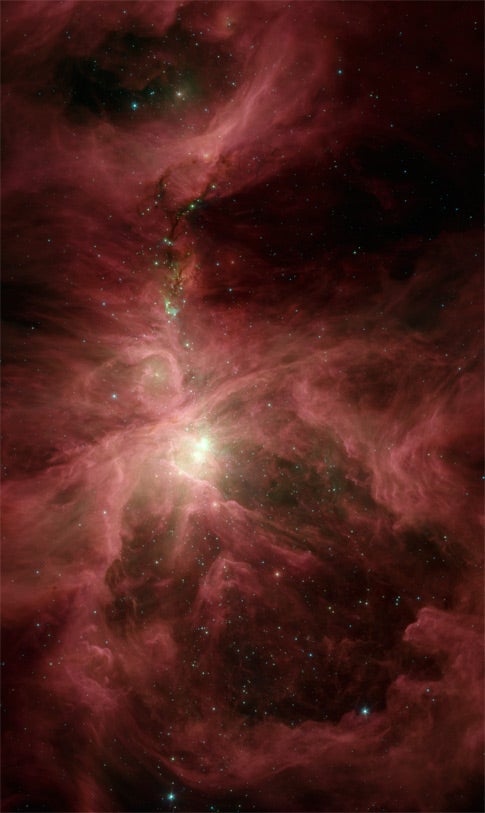NASA’s Spitzer Space Telescope resolved the Orion Nebula (M42) — one of the most popular targets of deep-sky photographers. Despite the nebula’s popularity, Spitzer’s new image reveals fresh details of M42.
The space telescope’s Infrared Array Camera (IRAC) collected nearly 10,000 exposures to compose this image. It shows the full view of Orion’s collection of pinkish dust swirls, speckled with stars, some of which are orbited by disks of planet-forming dust.
“When I first got a look at the image, I was immediately struck by the intricate structure in the nebulosity, and in particular, the billowing clouds of the gigantic ring extending from the Orion Nebula,” explains Tom Megeath, who spearheaded the research while with the Harvard-Smithsonian Center for Astrophysics (CfA) in Cambridge, Massachusetts.
Located about 1,450 light-years from Earth, M42 is as popular among researchers as it is with amateur astronomers. The region is rife with massive star formation and is the closest densely inhabited cluster of very young stars.
“Most stars form in crowded environments like Orion, so if we want to understand how stars form, we need to understand the Orion Nebula star cluster,” says Lori Allen of the CfA.
Although professional and amateur astronomers both target M42, Spitzer’s view reveals new details about the nebula — nearly 2,300 planet-forming disks in the Orion cloud complex. Each disk has the potential to form planets and its own solar system. Visible-light telescopes will miss the distant, small disks, but Spitzer’s infrared capabilities were able to resolve them.










